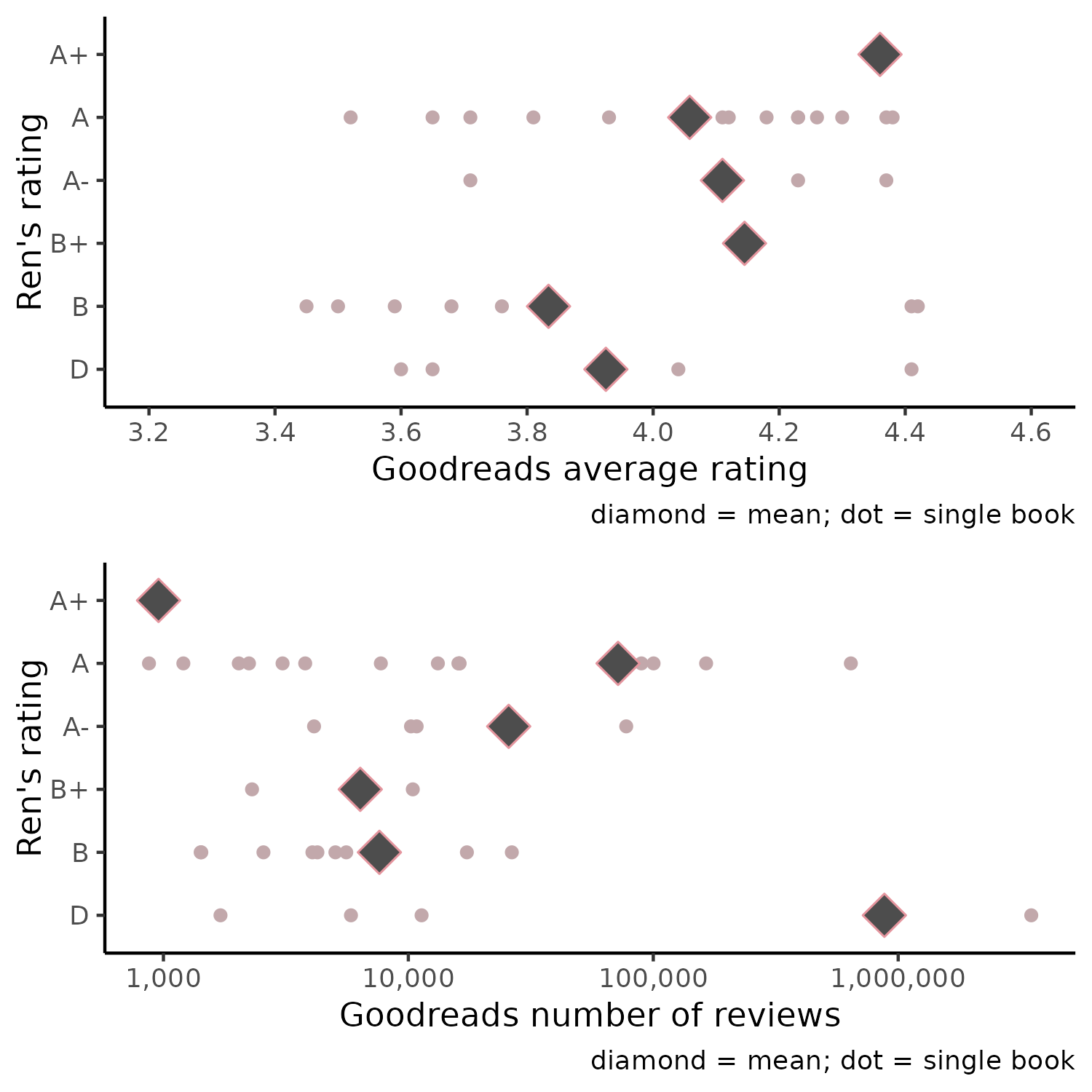Relationship between my book ratings and Goodreads book ratings
Bonus: Unrelated to this post, but if you’re into gay Goodreads stuff, you might enjoy this draft paper I just wrote for fun: Books are overwhelmingly supportive of transgender identities: Analysing queer literature using a Goodreads web scrape.
Now, onto the blog post.
For this blog post, the dataset is every queer fiction novel that I read between April 2024 and end of 2024 (see my books page), as I gave most of the books from this genre a letter rating. I removed all books that were the second or onwards in a series (as the Goodreads ratings are subject to selection bias for these books). This gave me 36 books in total for the analysis.
See the graph below:
- The top panel shows the Goodreads average rating (horizontal axis) vs my own rating (vertical axis).
- The bottom panel shows the Goodreads number of reviews (horizontal axis) vs my own rating (vertical axis). The horizontal axis is on a logarithmic scale.
In both graphs, each book is represented by a pink dot. The mean (average) of each letter rating is represented by a dark diamond.
It does seem like books in A+/A/A- tend to have a higher average Goodreads rating and a higher average number of reviews than books in B+/B.
But there is so much variation—so while this vague trend might hold true for the averages, there are plenty of books that I really enjoyed (A or A-) that got terrible Goodreads average ratings. Likewise, there are plenty of books that I didn’t enjoy (B or D) that had excellent Goodreads average ratings. And the sole book that I gave an A+ (The Chromatic Fantasy by H.A.) and was, in fact, quite life-changing, didn’t have many reviews at all.
So I think, in general, Goodreads metrics aren’t a great guide to my own personal enjoyment of queer fiction.
